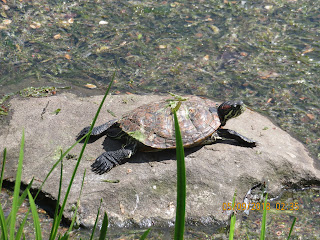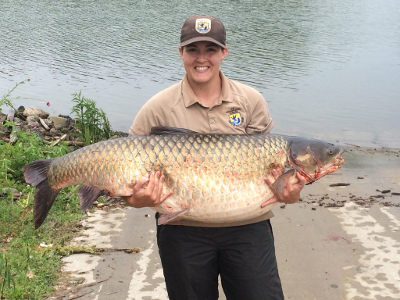Every spring when I fish The Meer I see evidence of carp; well not carp but carp relatives.
There are koi in the lake and I've seen the tails of what appear to be tailing carp. After catching a carp in Prospect Park Lake, I knew what I would try to catch next.
I thought about this for a long time. I wanted to catch a carp from The Meer. Due to the algae
growth in the lake, it is difficult to fish there most of the time. I had an idea where to fish first.
Carp follow a pattern, once I observed the pattern I formulated a plan of attack. Nothing unusual
just the basic chum for awhile and fishing .
As you can see from the photos, algae has taken hold in the lake and it's not even summer.
But this is where the battle is fought. The wind is a factor here too. Each afternoon there is a
wind coming from the west which moves most of the gunk to the north side of the lake. When
the wind calms down in late afternoon, there are openings in the algae blanket.
Ducklings
Bass bait
Grass carp fly
One of the numerous turtles at The Meer.
A beautiful koi
I observed the fish in the lake for several days. I chummed and never observed
any common carp. So it is possible that there may not be any commons or a very small
number.
The first two days I fished using a corn "pop up" with no success at all. The last afternoon at the Meer, I fished the grass carp fly as a dropper under a big deer hair fly. I thought maybe
the carp would take the deer hair because it resembled bread. If it took a pass then I hoped that the grass carp fly would entice the grass carp to take it. Neither fly worked that afternoon even though
there were at least six big broad tail fins sticking out of the water as the carp actively fed on vegetation.
























